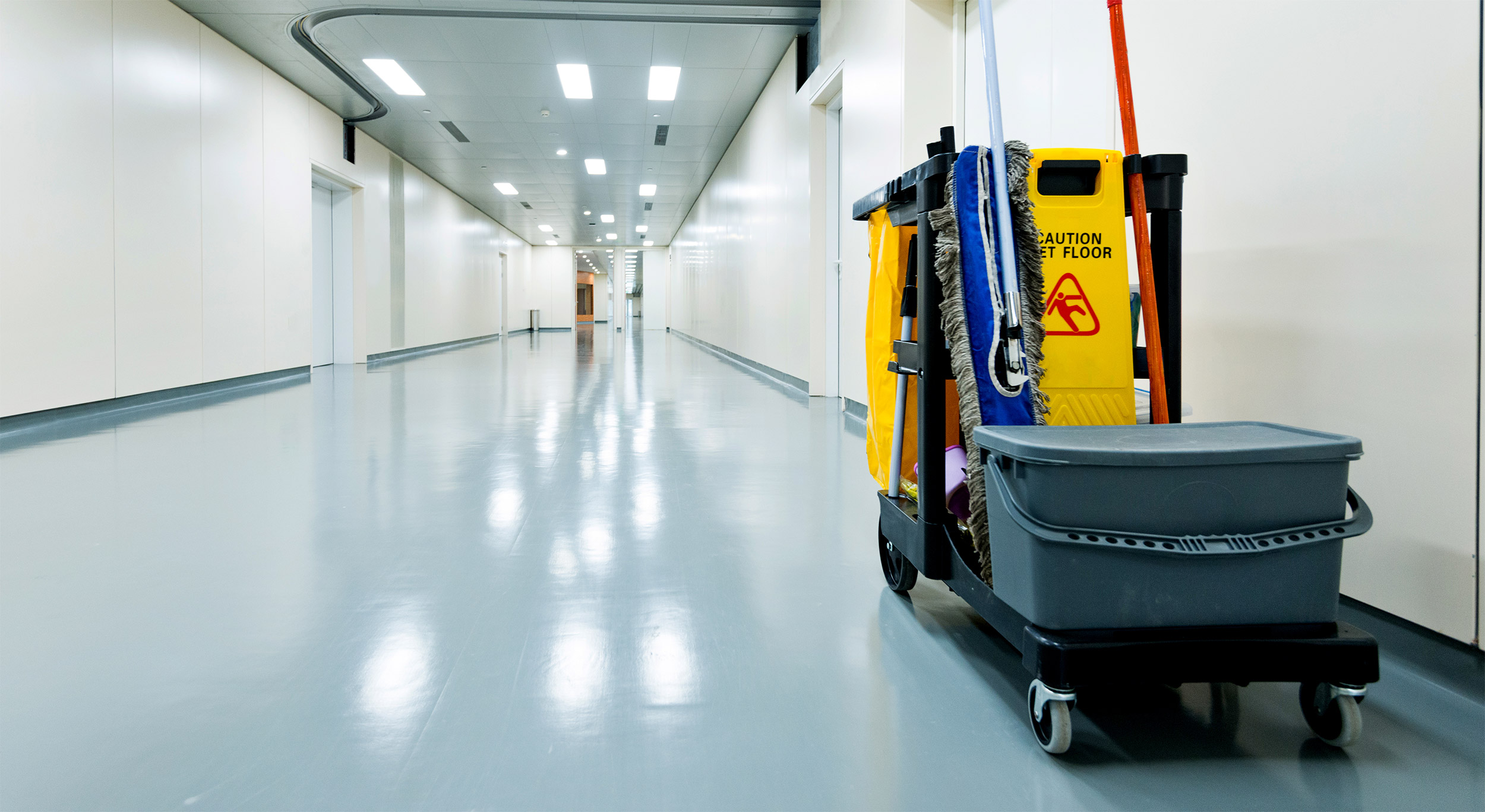There is a growing need for studies investigating whether this reservoir of microorganisms can result in human infection, which could provide evidence of a need for more rigorous floor hygiene practices, especially in healthcare facilities.
May 31, 2021
By June Arney
Much of what we write about here at Single-Use Endoscopy when it comes to heightened awareness around infection control brought on by the COVID-19 pandemic rightly centers on bronchoscopes and risks from aerosolization. We’ve also explored how GI physicians can help with COVID-19 and even counterfeit PPE.
With that in mind — the scrutiny focused on all sources of infection — a recent review also caught our eye: Floors in healthcare settings, it turns out, are no exception.
Writing in Infection Control Today, Peter Teska, a global infection prevention expert, compiles research from the past 10 years which shows that floors can serve as a reservoir for pathogens and may contribute to infection risk, though links to human infection have not been well studied.
Bacteria on floors can become resuspended in the air with the potential for inhalation, swallowing or contamination of surfaces and hands.
The collection of studies provides strong evidence that floor surfaces are a reservoir for pathogenic microorganisms and moderate evidence that floors are among the modes of transmission, he writes. There also is limited evidence that pathogenic organisms can be transmitted from the floor to a host.
In the world of healthcare, floors are classified as non-critical surfaces under the Spaulding definition since they presumably only contact shoes or intact skin, if people are walking barefoot.
Here are a few of the studies that have examined floor contamination:
- A recent study by Sarah N. Redmond, Khalid M. Dousa and others, published in February in Infection Control and Hospital Epidemiology, tested surfaces in hospital rooms for the presence of SARS-CoV-2 RNA. They found that floors were more commonly contaminated with the virus RNA than were the high-touch surfaces being tested. That study found that contamination of floors and shoes was common even outside patient rooms on the COVID-19 wards but decreased once improvements were made in floor cleaning and disinfection.
- The SARS-CoV-2 virus was found in Wuhan, China, to be widely distributed on floors, computer accessories, trash cans, and bedside handrails, in general wards and ICUs, according to a dispatch from the Centers for Disease Control and Prevention (CDC) published in July 2020. The air in the COVID wards also was shown to be widely contaminated, according to the findings. But the test used did not indicate the amount of viable virus. So just because the SARS-CoV-2 virus was present on a surface did not necessarily mean that the viral load present could cause someone to get sick.
- Another study conducted before the arrival of COVID-19, documented in the American Journal of Infection Control, found that patient shoe covers transferred live bacteria from the floor onto surgical bedsheets. But, in that case as well, a link to causing human infection was not demonstrated.
- One five-hospital study swabbed hospital floors for Methicillin-resistant Staphylococcus aureus (MRSA), the bacterial infection vancomycin-resistant enterococcus (VRE) and clostridium difficile colitis (C diff) which is one of the most common healthcare associated infections in the US. The study found that C diff was most commonly found on floors and was present in more than 50 percent of rooms where patients had the C diff infection.
- Another study found that floors were twice as likely to be contaminated with C diff spores as were bedrails. Hospital floors also were found to contain more than 16 times the spores contained on bedrails.
- Research by Curtis J. Donskey, published in the American Journal of Infection Control in 2019, shows that although there is strong evidence that floors are a potential cause of dissemination of pathogens, the link with human infection has not been well studied. Without randomized studies investigating floor hygiene as a method of controlling infection, there is little incentive for hospitals to undertake better floor hygiene programs.
Researchers agree that additional study must be done to understand the possible role of floor contamination.
“There is a growing need for studies investigating whether this reservoir of microorganisms can result in human infection, which could provide evidence of a need for more rigorous floor hygiene practices, especially in healthcare facilities,” Teska writes in his review.



